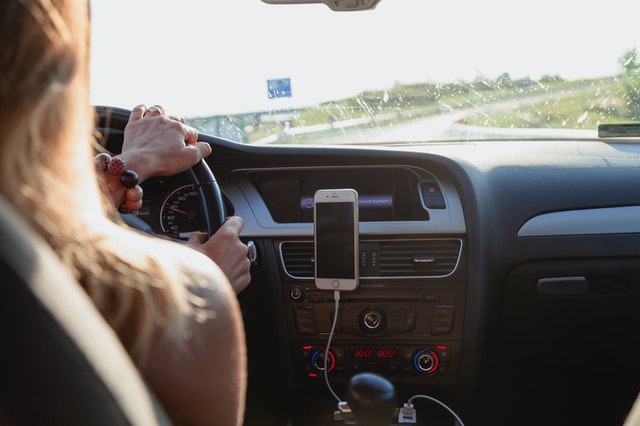Male vs Female Car Accident Statistics in Australia
Article by Matilda Douglas-Henry
Men account for 73 per cent of all traffic deaths worldwide, more than three times that of women*. Does the same massive gender discrepancy apply for Australia? Read on to find out; it won’t take you long to see a pattern.
This article will dive into the differences between male and female drivers and passengers in Australia, including:
- Male vs female car accident fatality statistics
- Male vs female speeding and drunk driving statistics
- Male vs female accident statistics by age
- An analysis of male vs female car accident statistics

Male vs female statistics: fatal car accidents
This first section will kick off an ongoing trend in gender-focused car accident statistics in Australia: men are almost always going to experience more injuries and fatalities, and are more likely to be responsible for reckless driving. Even though women account for half of the population, and 52 per cent of drivers licence holders are women, men consistently dominate when it comes to car accidents.
Between the years of 2015 and 2019, 65,781 drivers died or were seriously injured in New South Wales. 45 per cent were women, and 54.5 per cent were men. The same metric was applied to passengers, which found that of the 15,710 passengers, 59.5 per cent were women and 40.5 per cent were men. In South Australia, data from 2016 showed that 69 per cent of men died in a car accident as opposed to 31 per cent of women; the men saw a 4 per cent increase from the previous year, while women saw a 4 per cent decrease*.
Overall, Australian men are almost four times more likely to be involved in a fatal car accident than women.
Male vs female statistics: car accidents caused by speeding and/or drunk driving
Men are three times more likely to be caught for speeding or drunk driving than women. More than 70 per cent of Australian men have admitted to speeding on a daily basis, as opposed to only 30 per cent of women*. Indeed, 32 per cent of men would like to see our speed limits increase, whereas just 18 per cent of women do*.
On a global scale, nearly twice as many men aged 34 or younger die in speeding-related accidents than women in the same age bracket. In Australia, 90 per cent of alcohol-related road deaths are attributed to men*, and on average 82 per cent of road fatalities where the driver had a positive reading for THC, methamphetamine, or ecstasy were male.
Male vs female car accident statistics by demographic
Young drivers account for car accident fatalities more than any other age group in Australia, and are 5 to 10 times more likely to incur serious injury. This can be attributed to a variety of factors: they are more likely to take risks, they’re not as experienced behind the wheel, and they are less neurologically advanced.
When gender is thrown into the mix, crash risk statistics differ greatly. While the 20 to 24 age group accounts for just 4 per cent of the Australian population, men in this age bracket make up 10 per cent of annual road fatalities. Women of the same age range make up just 2 per cent. However, women are more likely to engage in distraction-based behaviours behind the wheel, like texting and eating. These bad habits are particularly common with young drivers*.
In New South Wales between 2015 and 2019, the highest crash rate for women was in the 17 to 25 and 40 to 59 age brackets; for men it was ages 26 to 39 and 60 to 70
An analysis of male vs female car accident statistics in Australia
After looking at the facts and figures, we can come to an overarching conclusion: in Australia, and the world at large, men are much more likely to be involved in car accidents than women, especially when they are driving. There are a number of reasons why this is so.
Firstly, men engage in risk-taking behaviour from a young age at a much higher rate than women, simply because they are not as neurologically advanced. Studies have shown that not only do many young men see themselves as indestructible—and therefore don’t think they will get hurt if they take risks—but they generally perceive behaviours as less risky than young women do, and experience less social anxiety when engaging in risk-taking behaviour.
Further, in the case of injury, young men would see this outcome as a product of misfortune, rather than a direct cause of impulsive decision-making*. This mentality can be embedded in a man’s psyche from a young age, and therefore have an negative impact on his driving style for the long term.
It is also true that men might be overrepresented in these statistics because they spend more time driving. 95 per cent of trucks have a male driver, whereas in 2016 just 1.4 per cent of motor mechanics were women. Naturally truck drivers have long commutes for work, which can often lead to fatigue or other distractions that culminate in an accident*. Regardless of this, male-based statistics aren’t based on motor mechanic data alone: there are compelling neurological and behavioural explanations for why men are more likely to be reckless drivers.
Conclusion
No matter your gender, it’s always important to practice safe and mindful driving to keep you and your passengers safe. Don’t forget to use DingGo’s quick quotes service for local and affordable panel beating services.
